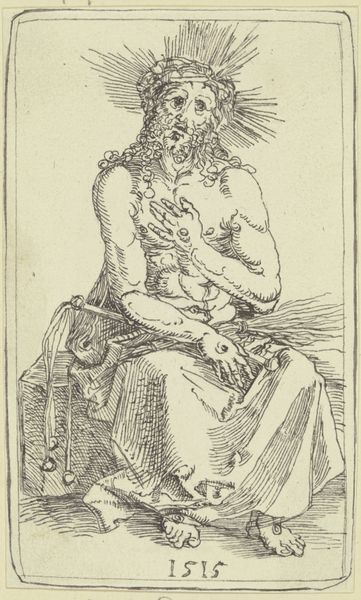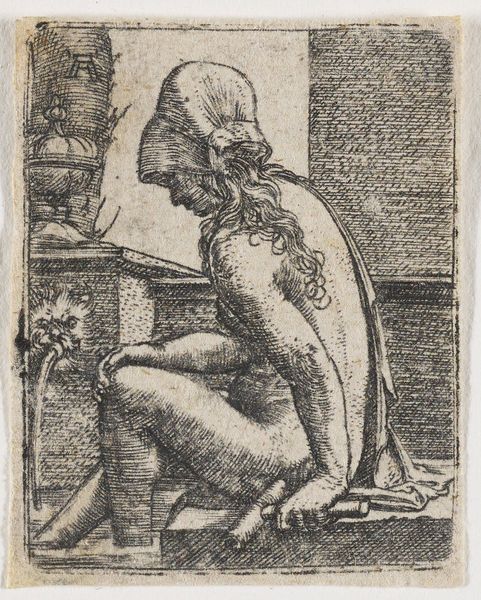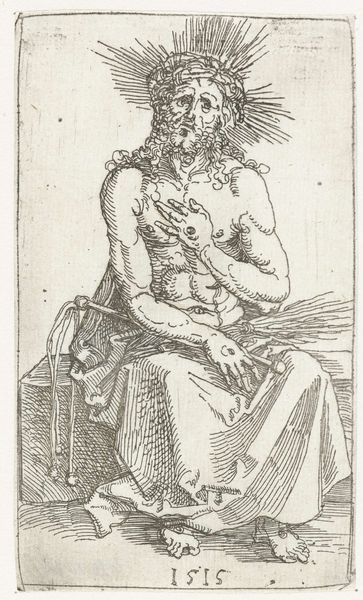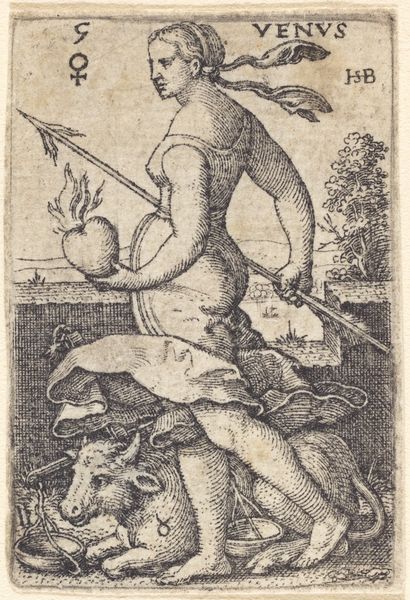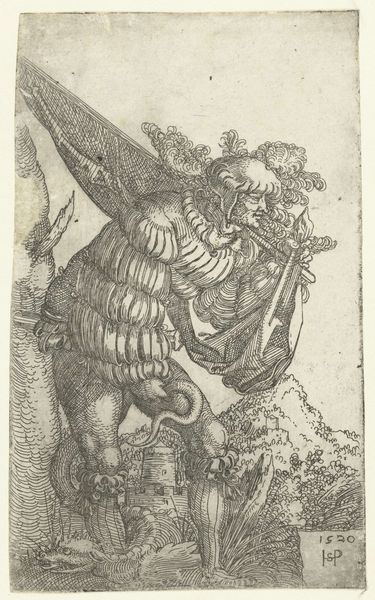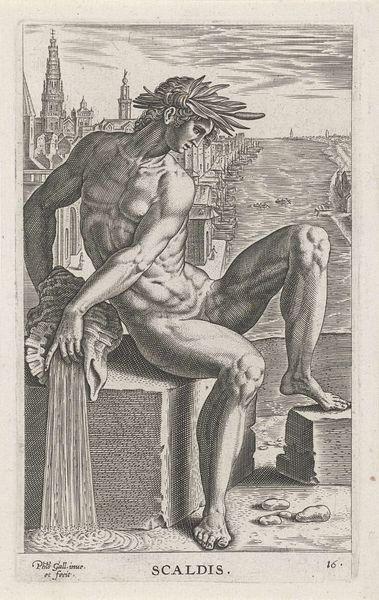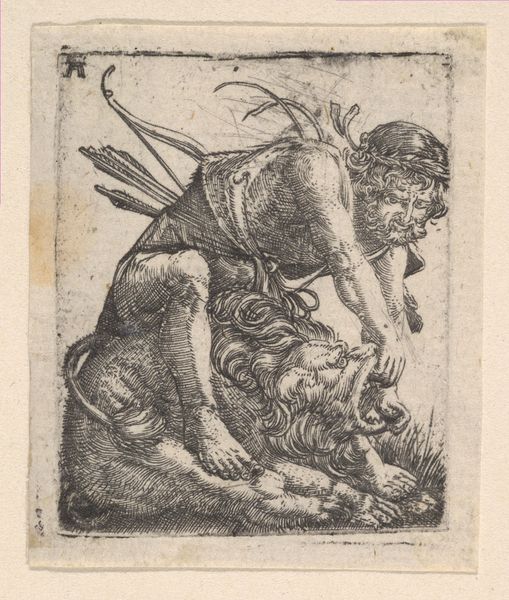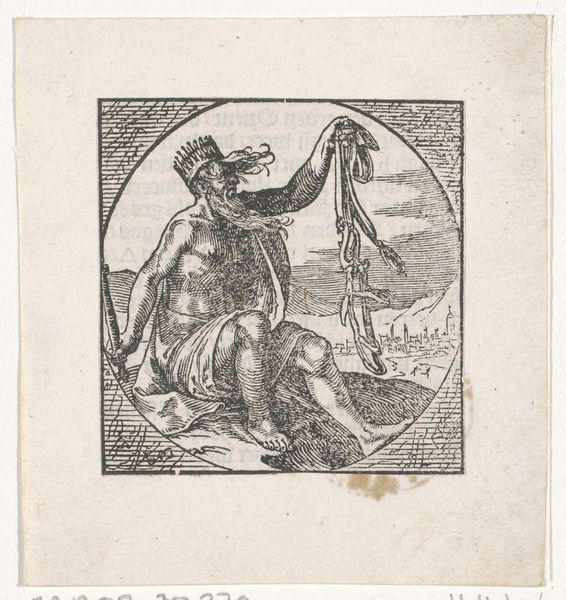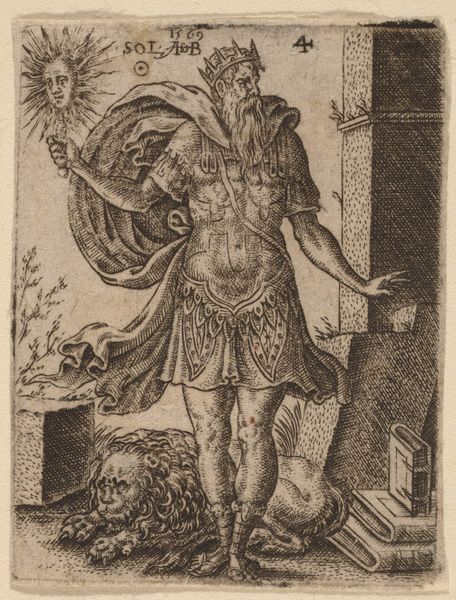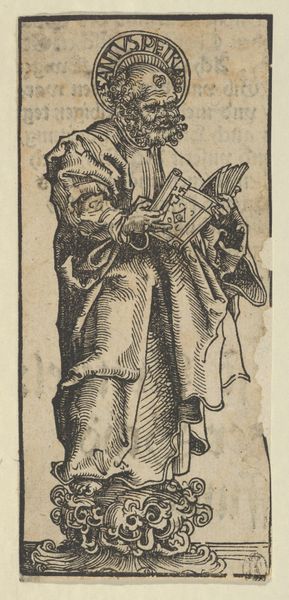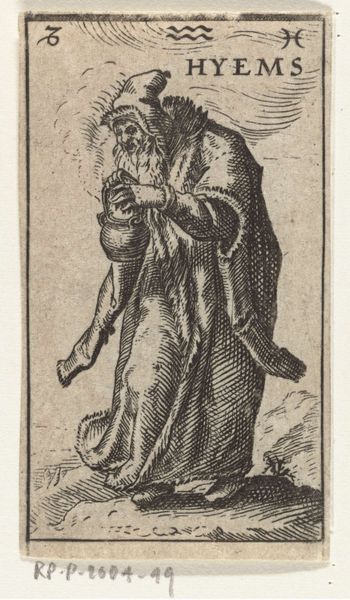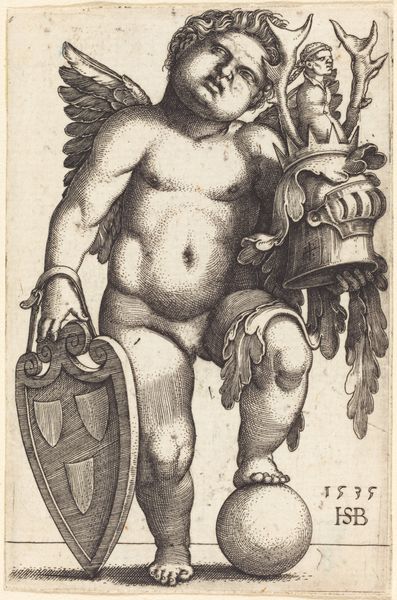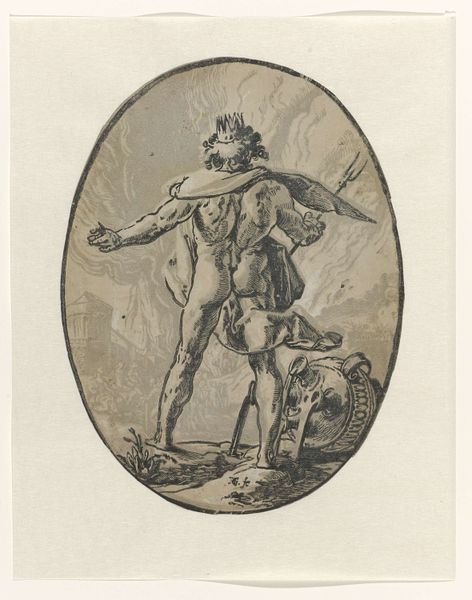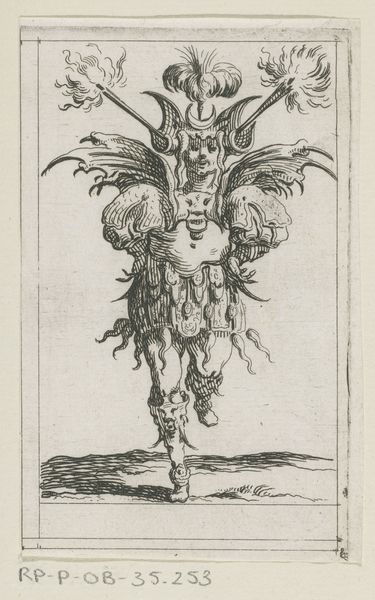
print, engraving
#
portrait
#
medieval
# print
#
pen sketch
#
pencil sketch
#
figuration
#
pen-ink sketch
#
history-painting
#
engraving
Dimensions: height 102 mm, width 79 mm
Copyright: Rijks Museum: Open Domain
Editor: This is a rather somber engraving titled "Christus als Man van Smarten," or "Christ as a Man of Sorrows," dating from 1509 to 1513, by an anonymous artist. It resides at the Rijksmuseum. The figure seems so isolated and filled with grief. What significance do you find in the image's symbolism? Curator: Note how the crown of thorns isn’t just a painful object; it's a potent symbol. What feelings does it evoke when combined with the figure’s bowed posture and hidden face? Think of all the meanings compressed into this single, agonizing moment – sacrifice, suffering, and perhaps even a quiet act of defiance. Editor: I hadn't considered the defiance aspect. So the pose isn't just about defeat? Curator: Not necessarily. The "Man of Sorrows" is a loaded trope with roots in Medieval piety. This is about empathy and spiritual connection but the very *act* of representing unspeakable grief visually is an act of asserting faith amidst despair, do you agree? Editor: I see your point. Showing the suffering is, paradoxically, a way of asserting hope or the potential for redemption. And the choice of engraving seems especially powerful too, as it would have allowed the image and those messages to spread quite easily. Curator: Precisely. The very act of replication means continuity. Symbols persist. Meanings evolve. Each viewer connects to this chain through cultural memory. The medium is itself part of the meaning! Editor: I never thought of it that way. It’s amazing how many layers are embedded within one seemingly simple image. Curator: Indeed. Looking closer and thinking critically, a single artwork can be a repository of cultural experience, resonating across centuries.
Comments
No comments
Be the first to comment and join the conversation on the ultimate creative platform.
